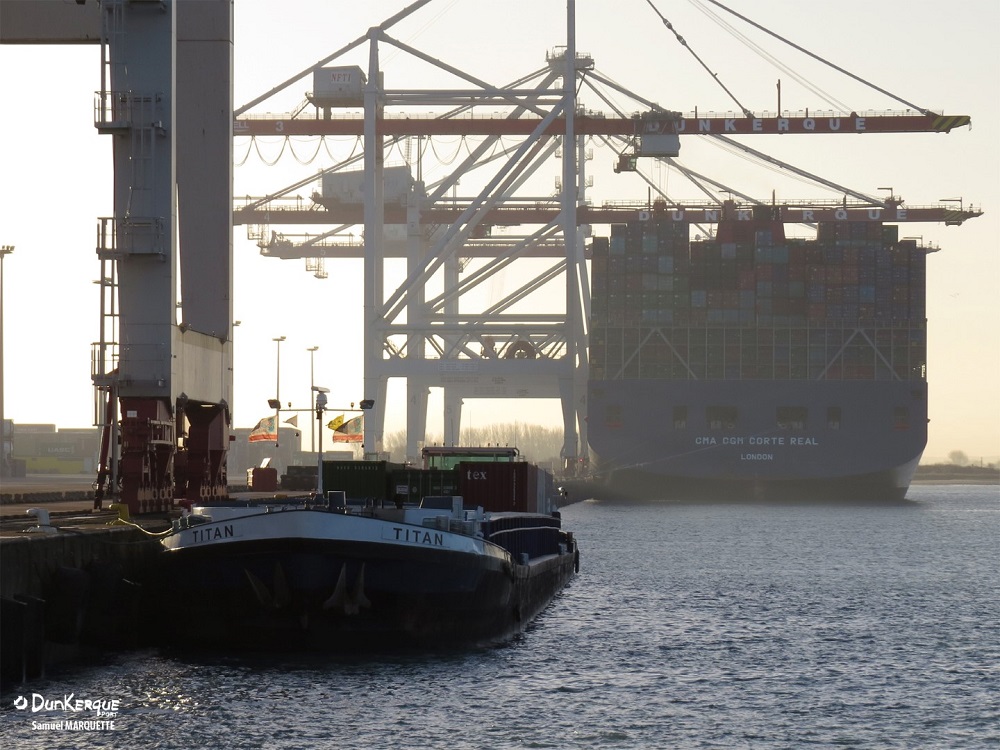Road-alternative modes of transport have increased in 2015, according to official figures released by the French port. Rail, with a modal share of 31%, rose by one point. While this mode can still rely on traditional sectors such as coal and ore, it now serves Dunkirk’s extended grain hinterland with nearly 320,000 tonnes of grain carried by rail. Combined transport, with the operator GREENMODAL, continues to increase, with the Dunkirk-Bonneuil shuttle seeing its frequency tripled in February 2016.
The modal share of waterway transport remains steady at 16%; heavy bulks are still dominant in this mode, notably with more than 1.3 Mt of grain carried by waterway to the port’s quays. Combined transport with Nord Ports Shuttle (NPS) to Lille and Dourges, and with Contargo to Valenciennes, doubled in volume over the year. Following on from this success, the operator NPS is commissioning a second barge in April 2016.
Pipeline transport continues to increase and has reached 5% of the port’s overland conveying volumes. The opening of the LNG terminal should offer good prospects for this mode.
Stéphane Raison, CEO of Dunkerque-Port, is very pleased with these results: “By integrating the traffic of the industrial port area, the port of Dunkirk is reinforcing its position as France’s foremost rail freight hub, with 13.9 Mt. Waterway totals 2.9 Mt, putting Dunkirk in first place among the inland waterway ports of the Hauts de France Region. Dunkirk remains France’s largest multimodal port and is increasing modal switchover.”
8th April 2016


